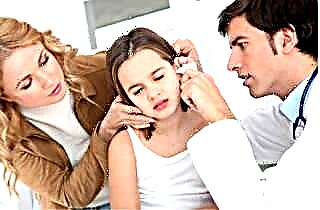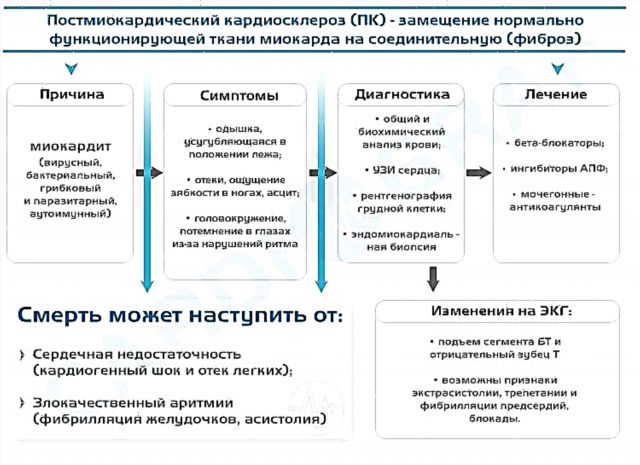Hearing loss is a persistent hearing loss that is congenital or acquired as a result of injury, the negative effects of drugs, or a previous serious illness. Modern medicine distinguishes three types of hearing loss (conductive, sensorineural and mixed), depending on what is impaired in the patient: the conduction of sound or its perception. If two types of pathology are present at the same time, we are talking about mixed hearing loss.
Features and symptoms
 Conductive hearing loss - what is it and how does it differ from sensorineural hearing loss? First of all, the fact that with it the organs that are responsible for the conduction of sound have suffered or are damaged. Simply put, when the sound does not reach those parts of the ear that can convert it into nerve impulses. It is diagnosed when:
Conductive hearing loss - what is it and how does it differ from sensorineural hearing loss? First of all, the fact that with it the organs that are responsible for the conduction of sound have suffered or are damaged. Simply put, when the sound does not reach those parts of the ear that can convert it into nerve impulses. It is diagnosed when:
- damage or underdevelopment of the tympanic membrane;
- overlapping of the auditory canal;
- accumulation of fluid in the middle or inner ear;
- serious defects of the outer ear (congenital or acquired);
- blockage of the Eustachian tube;
- obstruction of an oval or round window.
It is possible to establish conductive hearing loss only with the help of special tests, which are carried out by a specialist during the initial examination of the patient.
The first symptoms of the disease are usually tinnitus, a feeling of stuffiness in the ear, often pain and inflammation.
Causes of the disease
 The most commonplace reason for conductive hearing loss is the usual sulfuric plug, which is formed when the sulfur glands are overactive or the basic rules of personal hygiene are not followed. After removing the plug, hearing is restored almost immediately.
The most commonplace reason for conductive hearing loss is the usual sulfuric plug, which is formed when the sulfur glands are overactive or the basic rules of personal hygiene are not followed. After removing the plug, hearing is restored almost immediately.
Other common causes of acquired conductive hearing loss include:
- A ruptured eardrum. It can occur due to a large accumulation of pus in acute or chronic otitis media, if a puncture is not made in a timely manner. Sometimes the eardrum breaks when too loud and harsh sounds in the immediate vicinity of the ear (gunshot, explosion, roar of an airplane, etc.). In rare cases, a rupture is the result of an injury. To restore hearing in this case, an operation to restore the eardrum is required.
- Eardrum hardening is rare. Degenerative processes of the ear tissues lead to it. The sound reaches the eardrum, but it vibrates poorly and does not transmit it normally further. An operation or a good hearing aid that amplifies the sound can help here.
 Accumulation of fluid or pus in the middle ear (behind the eardrum). Often occurs with barotrauma, chronic or acute otitis media. A dense aquatic environment interferes with the conduction of sound, and a person begins to hear poorly. The problem is solved after pumping out the liquid.
Accumulation of fluid or pus in the middle ear (behind the eardrum). Often occurs with barotrauma, chronic or acute otitis media. A dense aquatic environment interferes with the conduction of sound, and a person begins to hear poorly. The problem is solved after pumping out the liquid.- Otosclerosis - when the mobility of the small bones in the middle ear is impaired. A progressive disease that, if untreated, can quickly lead to partial or complete hearing loss. The reasons for its occurrence are not fully established. Drug treatment.
- Various tumors: overlying the auditory canal, middle ear, or affecting the auditory nerve. A benign tumor can be removed with surgery. Malignant is most often arrested with radiation and / or chemotherapy.
As you can see, it is not possible to eliminate most of the causes leading to conductive hearing loss only with the help of medication and physiotherapy. In most cases, surgery is required to one degree or another.
With a hereditary or congenital type of disease, it is extremely problematic to significantly improve hearing. In the absence of medical contraindications, it is necessary to resort to hearing aids or implantation of an implant. These are rather complicated and expensive procedures, after which the patient is under the supervision of a doctor for a long time.
Degrees of hearing loss
Regardless of the cause of the disease, hearing loss has 4 degrees, which are determined by the level of decrease in the hearing threshold:
 Light (1 tbsp.) - the perception of sound is possible in the range of 25-40 dB. At the same time, human speech is clearly audible, but not a whisper. The perception of quiet sounds is difficult: the noise of rain, rustle of leaves, etc.
Light (1 tbsp.) - the perception of sound is possible in the range of 25-40 dB. At the same time, human speech is clearly audible, but not a whisper. The perception of quiet sounds is difficult: the noise of rain, rustle of leaves, etc.- Average (2 tbsp.) - the auditory threshold is 40-55 dB. The patient can hear loud speech, car noise, loud music and television. The whisper is perceived only at the ear itself. He does not hear quiet sounds at all.
- Severe (3 tbsp.) - hearing deteriorates to a perception of 55-70 dB. Speech is clearly perceived from a distance of no more than 1-3 meters. The patient can watch TV only at maximum volume. It is difficult to navigate on the street, as the sound of approaching traffic is not perceived. It's almost impossible to hear phone calls.
- Very severe (4 tbsp.) - the auditory threshold is from 70 to 90 dB. It is difficult to make out speech even at the ear. Without a hearing aid, a person hears almost nothing. Loud sounds are perceived as continuous noise.
Conductive hearing loss of grade 3, which does not respond to treatment for a long time, is the basis for the appointment of grade 3 disability. In the fourth stage of the disease, the patient is usually placed in a specialized institution to assist in social adaptation.
Preventive measures
 Effective prevention of congenital conductive hearing loss can only be thoughtful planning of pregnancy and strict adherence to all the prescriptions of doctors during it. This is especially true for expectant mothers suffering from serious chronic diseases. Some types of drugs can affect the formation of the fetus for several months after the end of their intake. And even more so, you cannot take potent medications while carrying a baby.
Effective prevention of congenital conductive hearing loss can only be thoughtful planning of pregnancy and strict adherence to all the prescriptions of doctors during it. This is especially true for expectant mothers suffering from serious chronic diseases. Some types of drugs can affect the formation of the fetus for several months after the end of their intake. And even more so, you cannot take potent medications while carrying a baby.
To avoid an acquired disease, it is necessary not to delay the visit to the doctor at the slightest sign of hearing impairment. Moreover, if you have recently had a viral or infectious disease. If you are prone to chronic otitis media, you need to protect your ears from water ingress and hypothermia and periodically undergo preventive examinations. When prescribing antibiotics, the dosage prescribed by the doctor must be strictly observed.
If water or a foreign body gets into the ear and cannot be removed from there on its own for several hours, this is also a reason to see a doctor.
Remember that the human ear is a complex and sensitive instrument. It is very easy to damage it. And the treatment often takes a lot of time and money. Therefore, it is very important not to start the disease and identify it at the very first stage.

 Accumulation of fluid or pus in the middle ear (behind the eardrum). Often occurs with barotrauma, chronic or acute otitis media. A dense aquatic environment interferes with the conduction of sound, and a person begins to hear poorly. The problem is solved after pumping out the liquid.
Accumulation of fluid or pus in the middle ear (behind the eardrum). Often occurs with barotrauma, chronic or acute otitis media. A dense aquatic environment interferes with the conduction of sound, and a person begins to hear poorly. The problem is solved after pumping out the liquid. Light (1 tbsp.) - the perception of sound is possible in the range of 25-40 dB. At the same time, human speech is clearly audible, but not a whisper. The perception of quiet sounds is difficult: the noise of rain, rustle of leaves, etc.
Light (1 tbsp.) - the perception of sound is possible in the range of 25-40 dB. At the same time, human speech is clearly audible, but not a whisper. The perception of quiet sounds is difficult: the noise of rain, rustle of leaves, etc.

